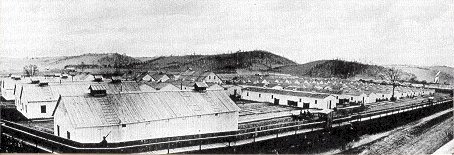
(Click for a List of Confederate Prisoners Buried)
|
|
The Prisoners of War Elmira Prison New York |
. |

The Civil War was in its third year when in the summer of 1864 the Federal Government converted Camp #3, also known as Camp Rathbun, into a prison camp for captured Confederate Soldiers. Heavy losses by the Confederate Army during this period necessitated the establishment of more prison camps in the North. Camp Rathbun was one of four camps built in 1861 when Elmira was designated as a rendezvous for the Union army. All volunteer regiments raised in Western New York State were processed in Elmira and then sent to the nation's capital.
The prison camp consisted of a 30-acre plot of ground surrounded by a twelve foot wall with a rampart near its top and on the outside of the wall. Approximately every hundred feet there was a guard shelter to protect them from the weather.

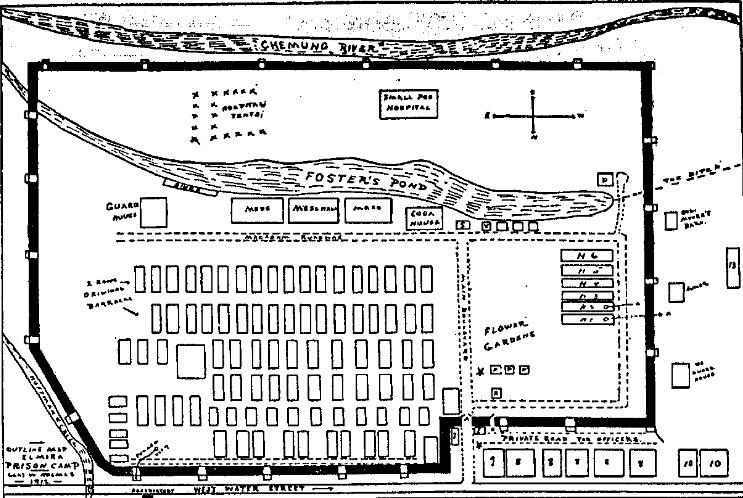
On July 6, 1864, 400 Confederate prisoners of war marched from Erie Train Station to the camp, becoming the first of 12,123 prisoners held in Elmira.
Another 700 Confederate prisoners were being transferred there from Point Lookout, Md., and other overcrowded Federal prisons, Before long, the camp became overcrowded. The prison population jumped from 4,500 in late July to 10,000 by fall. Inadequate housing for the influx of prisoners and a shortage of medical supplies, and sometimes doctors, created ideal conditions for small pox and other epidemics. These diseases spread through the camp like wildfire.
The Confederate soldiers soon renamed Elmira's prison camp "Hellmira." It was said to have been the worst prison camp in the North.
Living conditions were bad from the start, with insufficient shelter-the barracks held only half the prisoners; the others were crowded into tents, even in winter-and with a serious sanitary situation presented by a stagnant pond stretching the length of the enclosure, into which sinks drained. The camp was below the level of the Chemung River, which bordered it, making drainage difficult. A harsh winter in 1864-65 made matters worse. On St. Patrick's Day of the same year the Chemung River flooded, filling their tents and barracks with anywhere between six inches to two feet of water.
Winter was severe and prisoners suffered greatly before additional barracks were completed. New prisoners brought the total number confined to 12,122 by 12 May 1865, the last day captives arrived. On 1 July the officer in charge made this accounting of those prisoners of war: released, 8,970; still in hospital, 218; died, 2,917; escaped, 17. 10 escapees had spent 2 months digging a tunnel 66 ft long under the stockade perimeter, and at 4 a.m., 7 Oct. 1864, had crawled through to freedom.
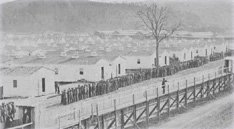
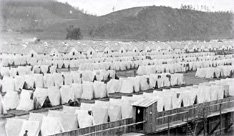
The prisoners' diet lacked vegetables, and by August there were 793 cases of scurvy. Dr. Eugene F. Sanger, camp surgeon and commandant, feuded constantly about unfilled needs and 1 Nov. 1864 wrote U.S. Army Surgeon General Joseph Kl Barnes: "Since August there have been 2,011 patients admitted to the hospital and 775 deaths. . . . Have averaged daily 451 in hospital and 601 in quarters, and aggregate of 1,052 per day sick. At this rate the entire command will be admitted to hospital in less than a year and thirty-six percent die."
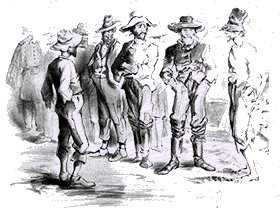
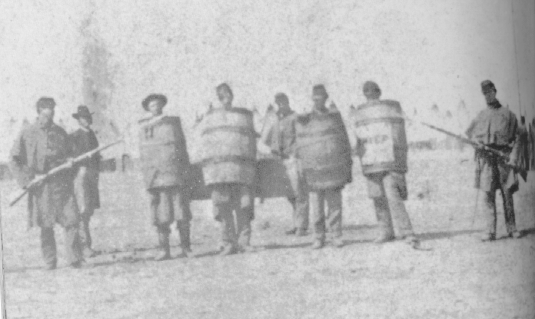
Of the 12,122 soldiers imprisoned at Elmira, 2,963 died of sickness, exposure and associated causes.
The sexton for Woodlawn Cemetery, John W. Jones, a former slave who arrived in Elmira via the Underground Railroad, buried each Confederate soldier that died in the Elmira Prison Camp. Of the 2,963 prisoners who Jones buried, only seven are listed as unknown. The federal government declared the burial site a national cemetery on December 7, 1877.
At war's end, prisoners received railway passes and money enough to get home. The camp was officially closed on July 5, 1865. The last Confederate prisoner left the Elmira Prison Camp on September 27, 1865. All that remains today of Elmira Prison is a well kept Cemetery along the banks of the Chemung River.
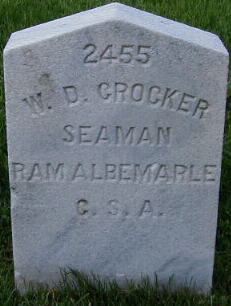
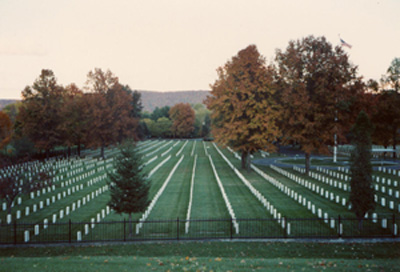
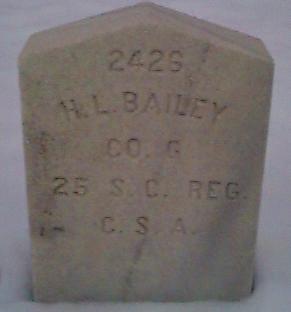
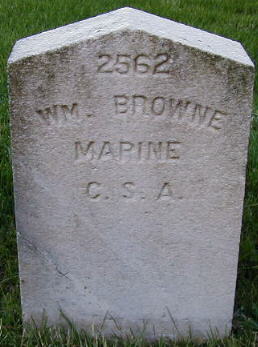
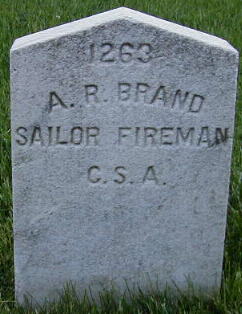
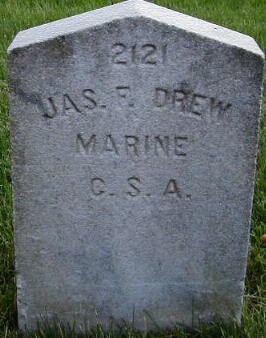
HOME
What's New -
About SCV -
Join SCV -
News Letter -
Photo Quiz -
Chaplain -
Education
Battle Site -
Ancestors -
Memorials -
Links -
Photo Gallery -
Guest Book -
Site Index